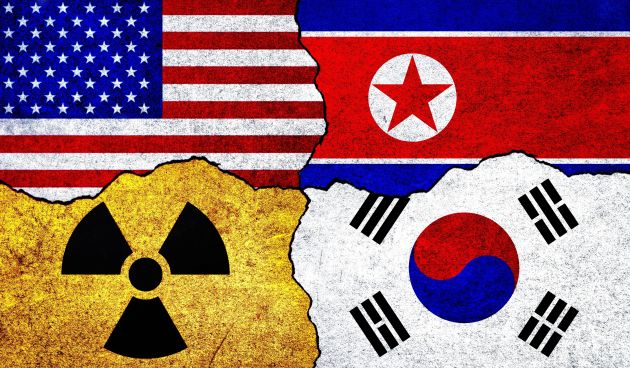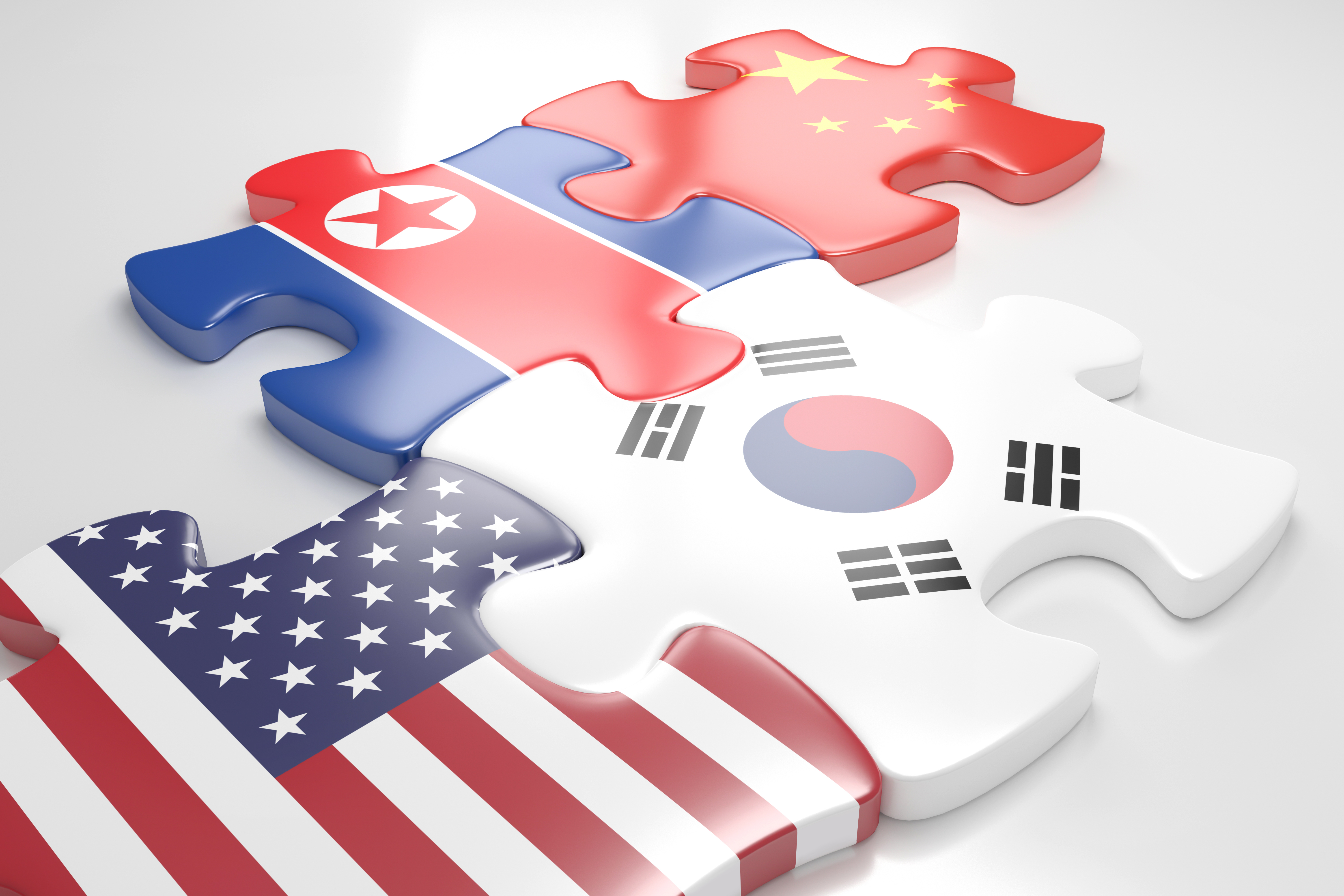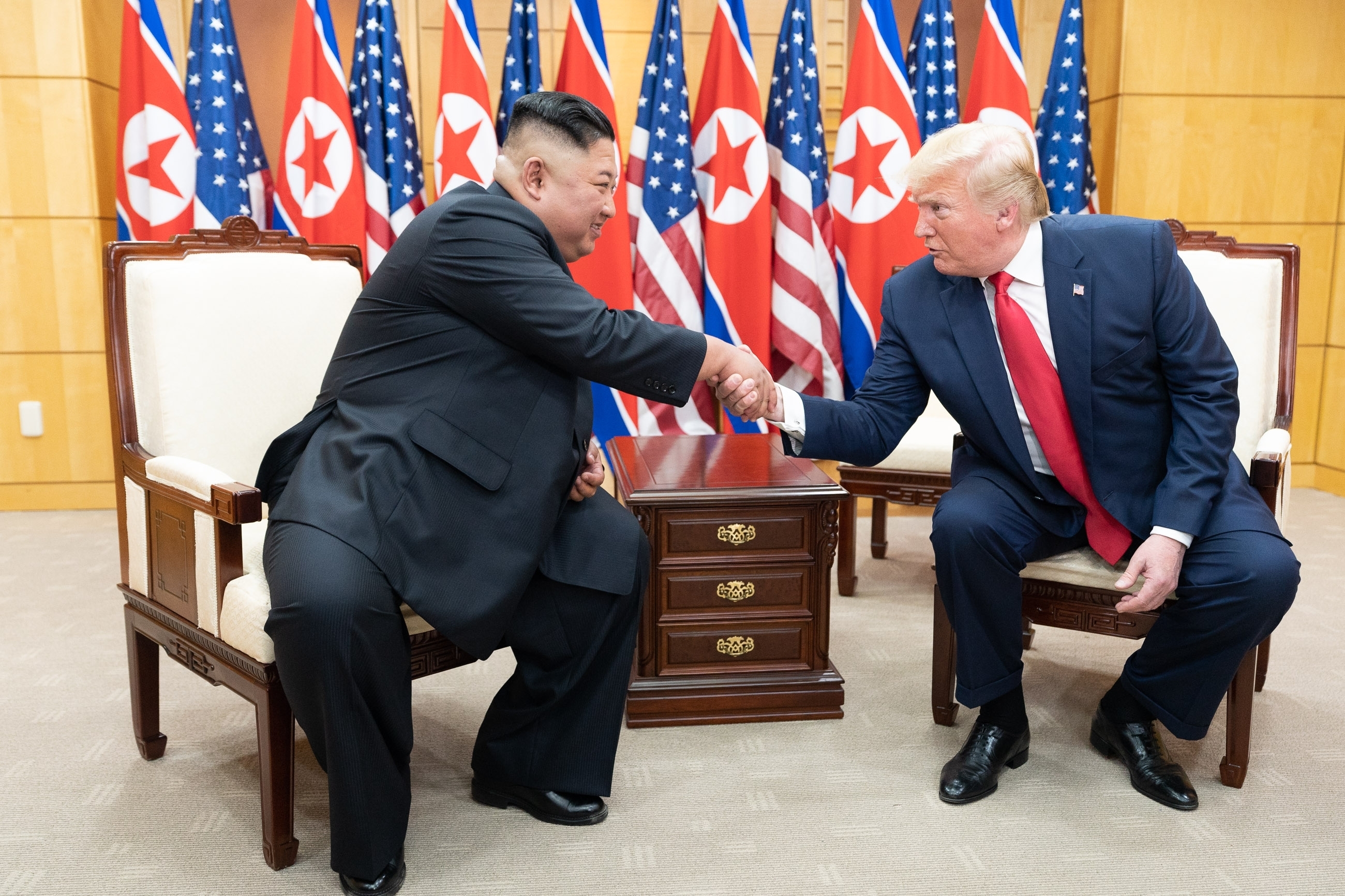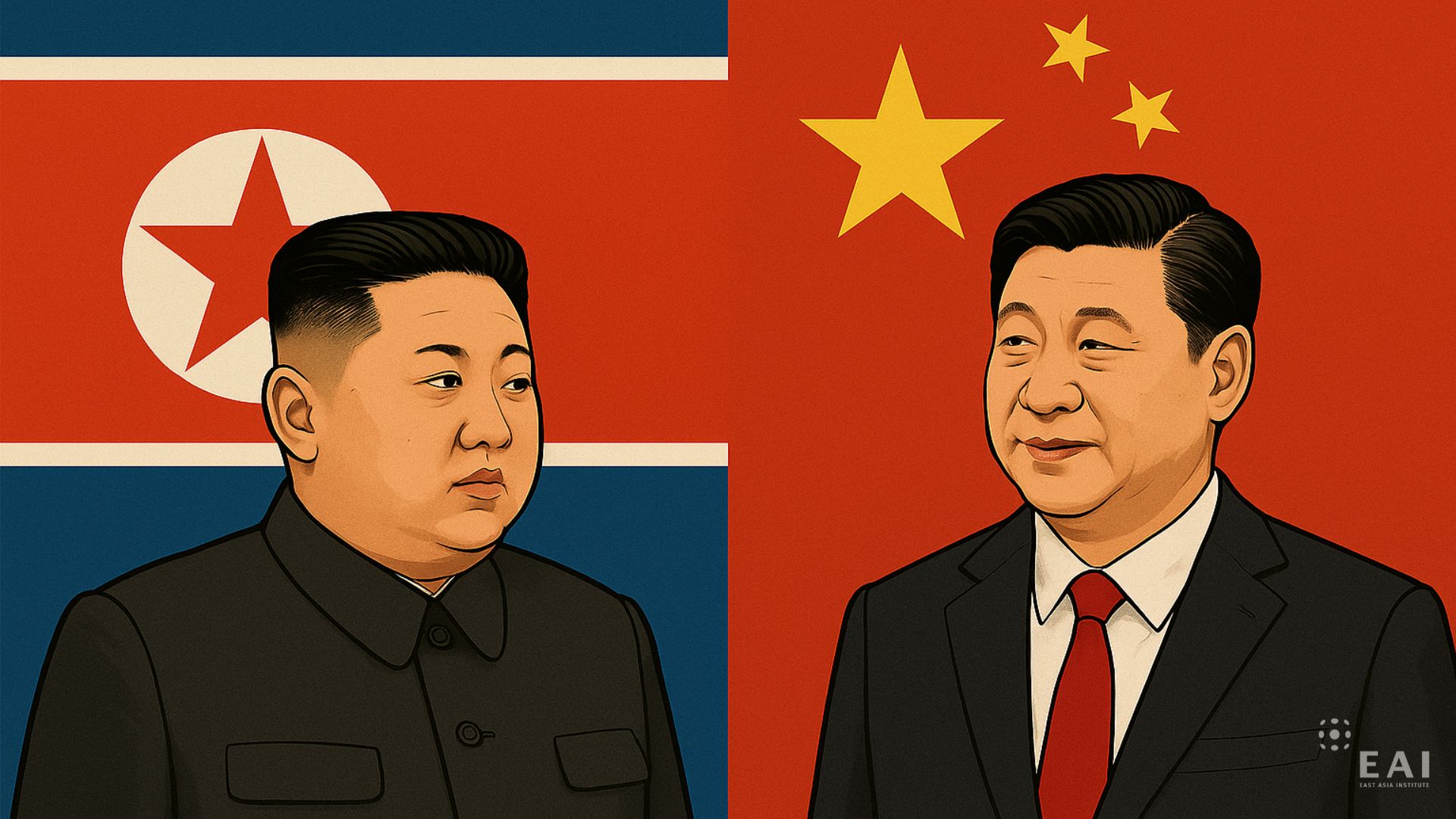■ See Korean Version on EAI Website
ROK-U.S. Shipbuilding Cooperation and MASGA: A Step toward a Comprehensive Alliance
The term MASGA (Make American Shipbuilding Great Again) was formulated during negotiations by the South Korean delegation to lower tariffs imposed by the second Trump administration. In fact, there have been frequent ideas and proposals for ROK-U.S. shipbuilding cooperation even before these tariff negotiations. Yet the cooperation’s actual outcomes, despite significant media attention, have thus far failed to meet expectations. Notably, the Biden Administration’s Secretary of the Navy Carlos Del Toro already visited HD Hyundai Heavy Industries' Ulsan and Hanwha Ocean's Geoje shipyards to assess their production facilities and warship construction capabilities as early as February 2024. For the United States, shipbuilding cooperation with South Korea is essential as its shipbuilding industry has atrophied in the face of China’s quantitative naval overtake in the last decade. As for South Korea, while it possesses world-class shipbuilding capabilities, cooperation with the U.S. is critical on numerous diplomatic fronts, including the North Korean nuclear issue and its relations with China. Under these conditions, Seoul’s shipbuilding cooperation with Washington could represent a vital step toward a more comprehensive and mutually beneficial ROK-U.S. alliance. However, substantive progress in ROK-U.S. shipbuilding cooperation requires that South Korea recognize and proactively overcome the domestic political and legal obstacles in the United States.
Bills on Naval Buildup and Shipbuilding, and Legal Constraints on ROK-U.S. Cooperation
Recently, an encouraging bipartisan bill was introduced in the U.S. Congress. On August 1, Representative Ed Case (D-HI) and Representative James Moylan (R-GU) jointly introduced the Merchant Marine Allies Partnership Act. This bill would exempt U.S. vessels from a 50% import tariff for modifications in allied shipyards and permit allied-built vessels to engage in U.S. coastal shipping. According to the Jones Act (1920), all vessels in U.S. coastal waters must be U.S.-built, owned, and operated. The new act would create an exception for allied nations to facilitate shipbuilding cooperation. The bill is currently referred to the House Committee on Transportation and Infrastructure.
In addition to the Jones Act, another significant legal constraint on shipbuilding cooperation is the Byrnes-Tollefson Act, which prohibits the U.S. Navy from directly contracting with foreign shipyards for naval vessel construction, including through subcontractors. Although the Act provides for an exception through a presidential waiver, the use of that waiver is realistically limited to extraordinary circumstances such as wartime. The Act also prevents Maintenance, Repair, and Overhaul (MRO) from being performed overseas for vessels homeported in the United States or Guam, with narrow exceptions for Littoral Combat Ships (LCS), voyage repairs, and damages from hostile acts and intervention.
According to 2024 data, only 40 out of the 296 U.S. naval vessels are homeported overseas, and the LCS fleet consists of only 22 ships. Therefore, unless the Byrnes-Tollefson Act is amended, ROK-U.S. shipbuilding cooperation is unlikely to materialize, as South Korea does not host U.S. homeports such as the naval bases in Yokosuka and Sasebo, Japan. In contrast, Japan is able to perform MRO for U.S. vessels homeported in Yokosuka and Sasebo. The two MRO contracts awarded to Hanwha Ocean in November 2024 were legally possible because they were for 7th Fleet vessels not homeported in the U.S. or Guam. Meanwhile, it was reported that Kang Hwan Suk, the Vice Minister of South Korea's Defense Acquisition Program Administration (DAPA), met with U.S. Assistant Secretary of the Navy for Research, Development and Acquisition Jason Potter on August 6-7 to discuss easing the Act’s regulations on the exclusive construction of U.S. naval vessels in U.S. shipyards. The reports wrote that Vice Minister Kang proposed various cooperative measures within the confines of current legal constraints. These include the construction of vessels by Korean shipbuilders in U.S. shipyards, or the production of block modules in South Korea for assembly in U.S. shipyards later on.
It is noteworthy that while the bills receive significant media attention upon introduction, this is merely the first step of the legislative process. A bill produces no substantive change if it is not referred to, is stalled in, or fails a floor vote in the House and Senate. This highlights the critical role of Congress in achieving tangible progress on the U.S. naval buildup and ROK-U.S. shipbuilding cooperation. A similar bill, the Ensuring Naval Readiness Act (ENA Act), had actually been introduced in June 2024 but failed to gain momentum as no follow-up action was taken. The bill was reintroduced in February 2025 and is currently held in the Senate Armed Services Committee. The Shipbuilding and Harbor Infrastructure for Prosperity and Security for America Act (SHIPS Act), linked to the Trump administration’s executive order in April 2025, has been submitted to the committees in the House and the Senate without a scheduled hearing. The Open America’s Waters Act, introduced this past June to permit foreign vessels in U.S. coastal shipping, faces similar legislative inertia. Of these four bills, the most promising appears to be the recent Merchant Marine Allies Partnership Act, but there is no guarantee that it will not be stalled in committee or will pass a floor vote.
Weakening Momentum for the Second Trump Administration’s Maritime Action Plan
Historically, when a maritime hegemon faces a strategic-level power transition, the hegemon has sought to maximize its domestic resource extraction capacity for naval buildup or redeploy naval assets to a theater subject to the power transition. The second Trump administration's April executive order, "Restoring America’s Maritime Dominance" and its Maritime Action Plan exactly exemplify the former effort. However, with the submission deadline for this all-encompassing plan—mobilizing the Departments of State, War, Commerce, Labor, Transportation, the U.S. Trade Representative, and Homeland Security—now less than two months away, the situation within the Trump administration seems challenging. This is due to the recent departure of key personnel from the White House. Ian Bennitt, Senior Director for Maritime and Industrial Base Capabilities at the National Security Council, left the administration in late July. His departure, following that of NSC Chief of Staff Brian McCormack, compounded the loss of five of the seven staff members of the maritime office who resigned earlier that month. This exodus of personnel suggests a weakening of the administrative momentum behind the April executive order and the Maritime Action Plan.
On the other hand, alongside the executive branch, the legislative branch plays a key role in enhancing a leading sea power's resource-extraction capacity. In the late 19th century, when the Franco-Russian alliance challenged British naval superiority in the Mediterranean, the British Parliament, in conjunction with the Spencer Program of 1893, passed additional legislation (the Naval Works Act of 1895 and the Naval Works Bill of 1896) for warship construction and coastal facility improvements not included in the naval estimate. The U.S. Congress in the 1930s also passed a series of major shipbuilding acts starting in 1934 to thwart a maritime power transition driven by Japan. The future of the U.S. naval buildup will be affected by whether the Trump administration can regain momentum for its Maritime Action Plan and whether the U.S. Congress can facilitate the passage of maritime and shipbuilding-related legislations. This is particularly crucial because Congress must lift the legal constraints on allied participation for South Korea to participate in shipbuilding cooperation, such as warship construction or Maintenance, Repair, and Overhaul.
Simultaneous Engagement with the Executive and Congress and the North Korean issue
For the Trump administration's Maritime Action Plan to succeed, the bills introduced in Congress related to naval expansion, shipbuilding investment, and shipbuilding/MRO cooperation with allies must all make substantive progress simultaneously. Only then can the United States mount an appropriate long-term response to the quantitative maritime power transition being driven by China. However, given the current situation, it is uncertain if or when the warship construction and shipbuilding industry revitalization efforts being pursued by the executive and legislative branches will advance smoothly. Both branches agree to some extent on the need for a U.S. naval buildup, but other domestic political factors can hinder amending existing laws and passing new legislation. For example, the metal workers division of the AFL-CIO, America’s largest labor union, has opposed legislation to use allied shipyards since the Biden administration. If the steelworkers, citing threats to their job security, engage in opposition and lobbying backed by the organizational power of the largest union, politicians will not be able to ignore such pressure.
Stakeholders in the U.S. shipbuilding industry view the outsourcing of U.S. combat vessel construction as a serious threat to their job security. They oppose amending existing laws and passing new legislation, while simultaneously demanding more investment in U.S. shipbuilding infrastructure. This opposition is not unrelated to the fact that the U.S. shipbuilding industry is heavily dependent on the naval vessel market. In 2020, for instance, while the share of total vessels delivered to U.S. government agencies was less than 3%, 14 of the 15 large, deep-sea vessels were delivered to the U.S. Navy and Coast Guard. The U.S. shipbuilding industry still maintains a strong protectionist stance on matters related to naval vessels. If national security considerations are added—such as the fear that information or technology related to weapons systems could be leaked when combat vessels are built in foreign shipyards—opposition to foreign construction could gain more traction. Some also suggest that concerns are amplified by the fact that South Korean shipyard workers have been employed in Chinese shipyards in recent years. The fact that attempts to repeal the Jones Act have been frustrated for the past 100 years is a testament to the persistent influence of the U.S. shipbuilding industry and union lobbies.
Considering this U.S. domestic political landscape, for South Korea to properly spearhead the MASGA project it presented as leverage during the tariff negotiations, it must engage in proactive outreach and lobbying with the U.S. Congress in addition to close consultation with the Trump administration. The aforementioned consultation between DAPA and the U.S. Department of the Navy on August 6-7 can be seen as a case of an inter-administration approach. While such cooperation could be affected by the fallout from the recently delayed tariff agreement, the Trump administration's executive order and Maritime Action Plan have already been announced. As time passes and concerns and threat perceptions regarding the naval power gap with China heighten, the demand for shipbuilding modernization and rapid warship construction is likely to gain strength. From South Korea's perspective, to carry on this political momentum in the U.S., it is necessary to pursue simultaneous engagement with the U.S. Congress from the legislative, corporate, and private sectors, going beyond the administration. When South Korea's National Assembly, corporations, and private entities together form a network to continuously engage not only the Trump administration but also Congress, the political foundation for ROK-U.S. shipbuilding cooperation will be strengthened, and the legal obstacles in the U.S. could be overcome.
As mentioned, South Korea's multifaceted engagement with the U.S. Congress is necessary for ROK-U.S. shipbuilding cooperation related to the U.S. naval buildup. It is also a desirable policy initiative for establishing a consistent approach between the ROK and the U.S. on pending issues related to North Korea—non-proliferation, a peace regime, and the size and role of the USFK—and for promoting stability in the Asia-Pacific region surrounding the Korean Peninsula. Although the media reported that the second Trump administration could reduce the size of the United States Forces Korea (USFK), the Senate Armed Services Committee on July 11 passed the Fiscal Year 2026 National Defense Authorization Act (NDAA), which stipulated that any "reduction of U.S. forces on the Korean Peninsula or the transition of wartime operational control over the Combined Forces Command" is prohibited until the Secretary of Defense certifies to Congress that such a measure is in the national interest. Although this is a bill enacted annually thus subject to change in the ever-shifting security environment, it is important to remember that the U.S. Congress is also an actor that could influence the size of the USFK. It is necessary for Seoul to induce the U.S. Congress to approach the issue of USFK's scale and role in line with South Korea’s long-term North Korea policy. Furthermore, as North Korea's nuclear capabilities advance, the long-term goals of South Korea and the U.S. regarding the North Korean issue must be coordinated. Establishing a solid consultative mechanism with the U.S. Congress, which holds a firmer stance on denuclearization, would also have the effect of ensuring that ROK-U.S. cooperation is built upon the shared long-term vision of denuclearization and the establishment of a peace regime. A policy of simultaneous engagement with both the U.S. administration and Congress could begin with the U.S. naval buildup and ROK-U.S. shipbuilding cooperation. Active engagement with Congress could also help to ensure that South Korea and the U.S. share a long-term vision in their North Korea policy centered on denuclearization and a peace regime. ■
■ Inhwan OH is a Senior Research Fellow of EAI and a Lecturer at Seoul National University.
■ Translated and edited by Inhwan OH, Senior Research Fellow; Jonghyuk CHUNG, Researcher, Korea National Diplomatic Academy
For inquiries: 02 2277 1683 (ext. 202) | ihoh@eai.or.kr




